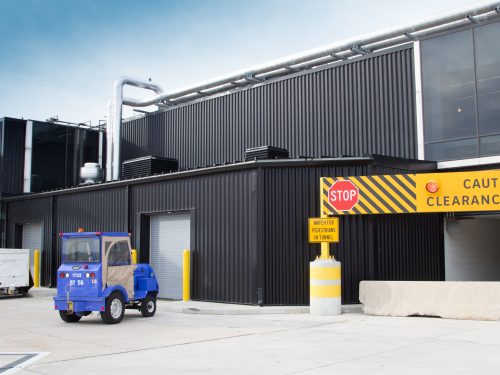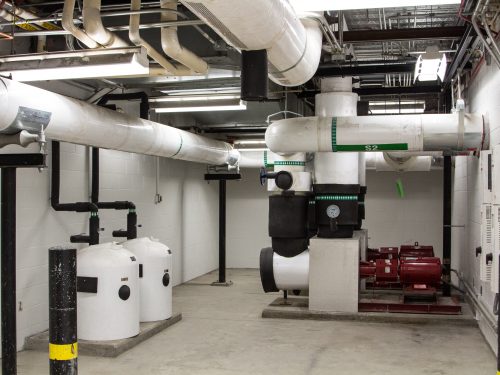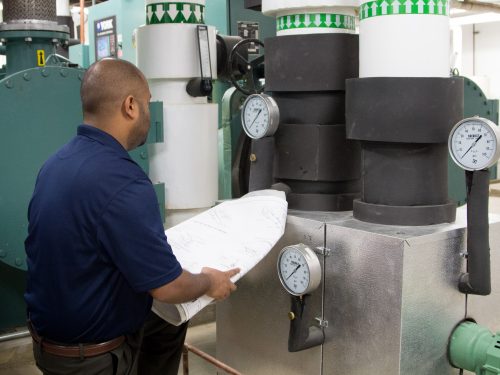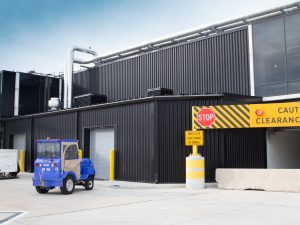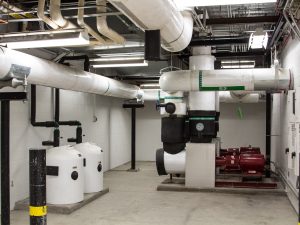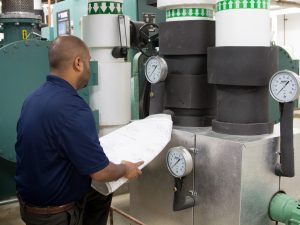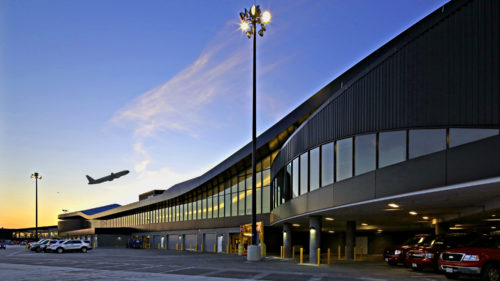Replacement of Concourse C Chilled Water Plant
Replacement of Concourse C Chilled Water Plant
Following a merger of Southwest Airlines and AirTran Airways, Baltimore-Washington Thurgood Marshall International (BWI Thurgood Marshall) Airport saw an uptick in business in Concourse C. It was evident the concourse needed to be expanded, and several upgrades were necessary to provide a better travel experience. As part of this effort, JMT was tasked with designing a replacement chilled water plant for the concourse, a project that was delivered $3 million under budget.
A larger concourse required cooling capacity beyond the existing plant’s capabilities, so Maryland Department of Transportation Maryland Aviation Administration (MDOT MAA) decided to replace the aging plant entirely and connect the independent loop of the concourse to the airport’s chilled water plant. It was key, however, for the plant to maintain sufficient chilled water in the concourse to provide energy efficiency and reliability.
The design for the chilled water plant consisted of three 600-ton liquid-cooled, centrifugal water chillers and three induced draft cooling towers. To minimize energy consumption, a control system was installed to optimize the performance of the chillers, cooling towers, and pumps. In addition, a chilled water plant optimization program was provided by Johnson Controls, Inc. Because chillers operate more efficiently at a reduced capacity and the efficiency of the cooling towers vary based on outside air temperature and humidity, the program can activate multiple pieces of equipment at partial capacity to minimize the electrical energy consumption.
The total thermal load of the concourse at full capacity on a design day is 600 tons. With three 600-ton chillers installed, this gives the concourse an N+2 configuration for reliability. The strength of this installation, however, is not just for providing chilled water for the concourse. The piping interconnecting the concourse and terminal gives the entire airport additional chilled water capacity. This piping can be used to supply the main terminal with chilled water in the event of a central utility plant failure, or, on a mild day, the entire load of the south terminal can be accommodated.
Maintaining airport security and comfort proved to be a challenge while a major addition to the concourse was constructed. To prevent visual impairment from the control tower, roof-mounted equipment was specially treated to reduce glare. The design also required that equipment not exceed a specified height. A major criterion of the project was the interconnection of the chiller plant in Concourse C with the central chilled water piping loop in the terminal. This required a large pipe distribution network – more than 1,600 feet long and weighing more than 100 pounds per foot – to be installed on the roof. Piping insulation included heat tracing to prevent freezing in the winter, as well as heat transfer of the chilled water to the outside environment during the summer.
All BWI Thurgood Marshall travelers can now enjoy the climate-controlled and ventilated environment. The chilled water plant design is a supporting facet of the entire climate control system for the airport. While the plant is designed specifically for Concourse C and the terminal area between Concourses B and C, the cooling capacity produced at this location supplements the air conditioning of the entire airport.
